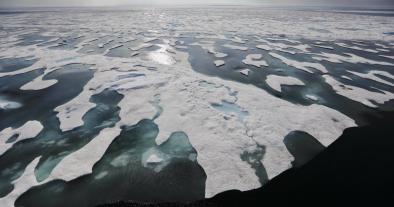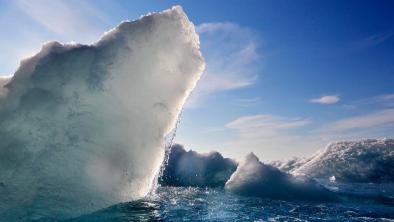Science Source
Drivers of 2016 record Arctic warmth assessed using climate simulations subjected to Factual and Counterfactual forcing
It’s been said the Arctic is the canary in the coal mine. The canary in the coal mine really chirped loudly in 2016. This is where the signal is clearly emerging beyond the noise, and it affirms predictions of how climate change will unfold on Earth.
Martin Hoerling, co-author and NOAA meteorologist
- Investigates the cause for extremely warm Arctic surface temperature during 2016 via:
- A suite of historical atmospheric model simulations that uses a hierarchy of global boundary forcings designed to inform research on the detection and attribution of weather and climate-related extremes
- Experiments forced by actual variations in sea surface temperature, sea ice concentration, and atmospheric chemical composition (so-called Factual experiments)
- Additional (Counterfactual) experiments are conducted in which the boundary forcings are adjusted by removing estimates of long-term climate change
- Experiments that are identical to the Factual runs except that sea ice concentrations are set to climatological conditions (Clim-Polar experiments)
- Results indicate that 30–40% of the overall forced Arctic warming signal in 2016 originated from drivers outside of the Arctic
- Finds a near-zero probability for Arctic surface temperature to be as warm as occurred in 2016 under late-19th century boundary conditions, and also under 2016 boundary conditions that do not include the depleted Arctic sea ice
- Concludes that about 60% of the 2016 Arctic warmth was likely attributable to human-induced climate change
Related Content
Science Source
| Geophysical Research Letters
Accelerated increase in the Arctic tropospheric warming events surpassing stratospheric warming events during winter
S.‐Y. Simon Wang, Yen‐Heng Lin, Ming‐Ying Lee et al
Science Source
| Bulletin of the American Meteorological Society
EEE 2016: CMIP5 Model-based Assessment of Anthropogenic Influence on Highly Anomalous Arctic Warmth During November–December 2016
Jonghun Kam, Thomas R. Knutson, Fanrong Zeng et al
Headline

Dec 12, 2017 | Mother Jones
The Arctic is warming faster than at any point in the past 1,500 years
Headline

Nov 27, 2017 | CBC News
Arctic climate change being felt farther south, scientists say


